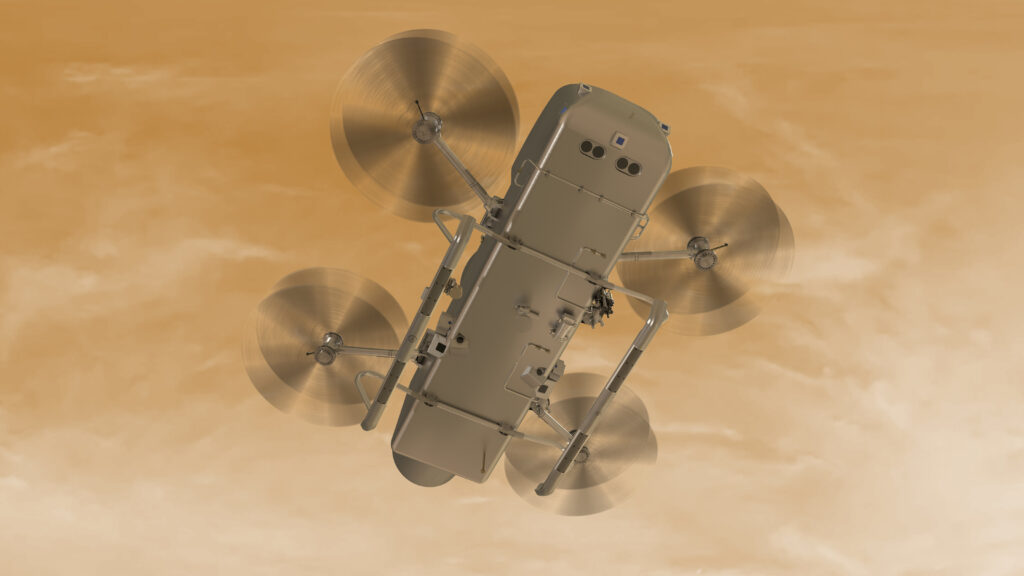NASA postponed the launch of the Dragonfly drone to Titan and delayed making a key decision about the mission. This was due to budget issues.

The Dragonfly mission was approved in 2019. Within its framework, NASA plans to send a rotary-wing aircraft with a total weight of about 450 kg to Titan. It will be equipped with four double screws, allowing it to move at a speed of about 36 km/h and climb to a height of up to 8 km.
The main task of the spacecraft will be to search for complex organic molecules and assess the overall suitability of this celestial body for life. The drone will be able to collect samples from the Titan’s surface and conduct chemical analysis. Dragonfly will also study the moon’s terrain, its atmosphere and hydrocarbon reservoirs.
More recently, the launch of Dragonfly was scheduled for 2027, with the arrival to Titan in 2034. Unfortunately, NASA will no longer be able to maintain this schedule. According to a message published on the organization’s website, the launch of Dragonfly will be postponed to July 2028. In addition, NASA has also postponed the formal confirmation of the mission to next year, the stage at which the organization approves the final cost and schedule of the mission.
The postponements are related to the general budgetary uncertainty that arose with the deal concluded in May of this year. In its course, Congress and the White House agreed to raise the debt ceiling in exchange for limiting non-defense spending to the level of last year. As a result, instead of the expected increase, NASA’s budget was frozen, which negatively affected many different projects. And Dragonfly is no exception.
Therefore, NASA management decided to postpone the launch of Dragonfly for a year to wait for the stabilization of the budget situation. It is expected that the mission will receive formal confirmation in the spring, after the budget request for the 2025 fiscal year is published. In addition, NASA has issued permission to start manufacturing some components of the spacecraft, although this usually happens after formal confirmation.
According to https://spacenews.com
Follow us on Twitter to get the most interesting space news in time
https://twitter.com/ust_magazine


